Rainy Tang
Year of birth: 2003
Where do you live: I was born in China, educated in mediterranean region and later went to New York for collage
Your education: School of visual arts in NYC
Describe your art in three words: Spiritual, surreal, idealism
Website | Instagram
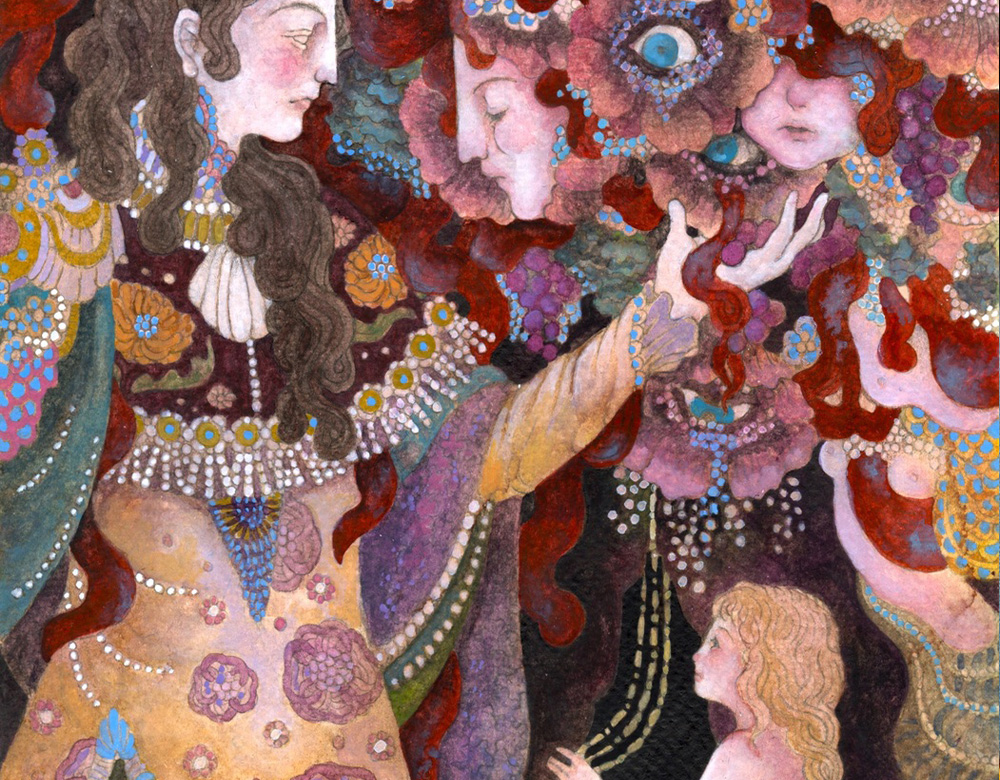 Rainy Tang | First Glance | 2024
Rainy Tang | First Glance | 2024
Your illustrations often blend beauty and horror in a poetic way. How do you balance these seemingly opposing elements in your work?
I think to blend beauty and horror in a poetic way is my aesthetic taste. I’m very much attracted to beautiful paintings, but at the same time beauty on its own seems empty, horror can add some spice to the planeness.
Take ‘Letter from an Unknown Woman’ as an example, the story itself is beautiful, yet the core of the story is tragic and sorrow which make the book so impressive. I would love to illustrate the beauty of the book yet the extreme love of the woman and the sacrifice she made to herself also seems horrific in a level of degree. I think everything can be presented in a beautiful way, and also beauty is within many things. I don’t feel like I’m balancing the two elements but rather like discovering both ones within the other and it’s interesting because it provides another fresh interpretation of expressing beauty.
What drew you to adapt Stefan Zweig’s “Letter from an Unknown Woman”? How did you approach translating its themes visually?
‘Letter from an Unknown Woman’ is an interesting novel to read, as it provides a monologue entirely from the perspective of a passionate, obsessive woman. I love how it forgoes a complex plot and instead unfolds as a quiet confession of desperate, sorrowful love. The male protagonist is almost symbolic, existing only to highlight the intensity of the woman’s love, as if he barely exists otherwise. Zweig’s language is beautiful, though some criticize the novel for portraying the protagonist as a love-obsessed fool. While I don’t deny this interpretation,I believe the novel’s strength lies in its extreme portrayal of devotion-what happens when love is pushed to its absolute limit? Since the story has provided me with such an interesting reading experience, I wanted to see how it would look in a visual form.
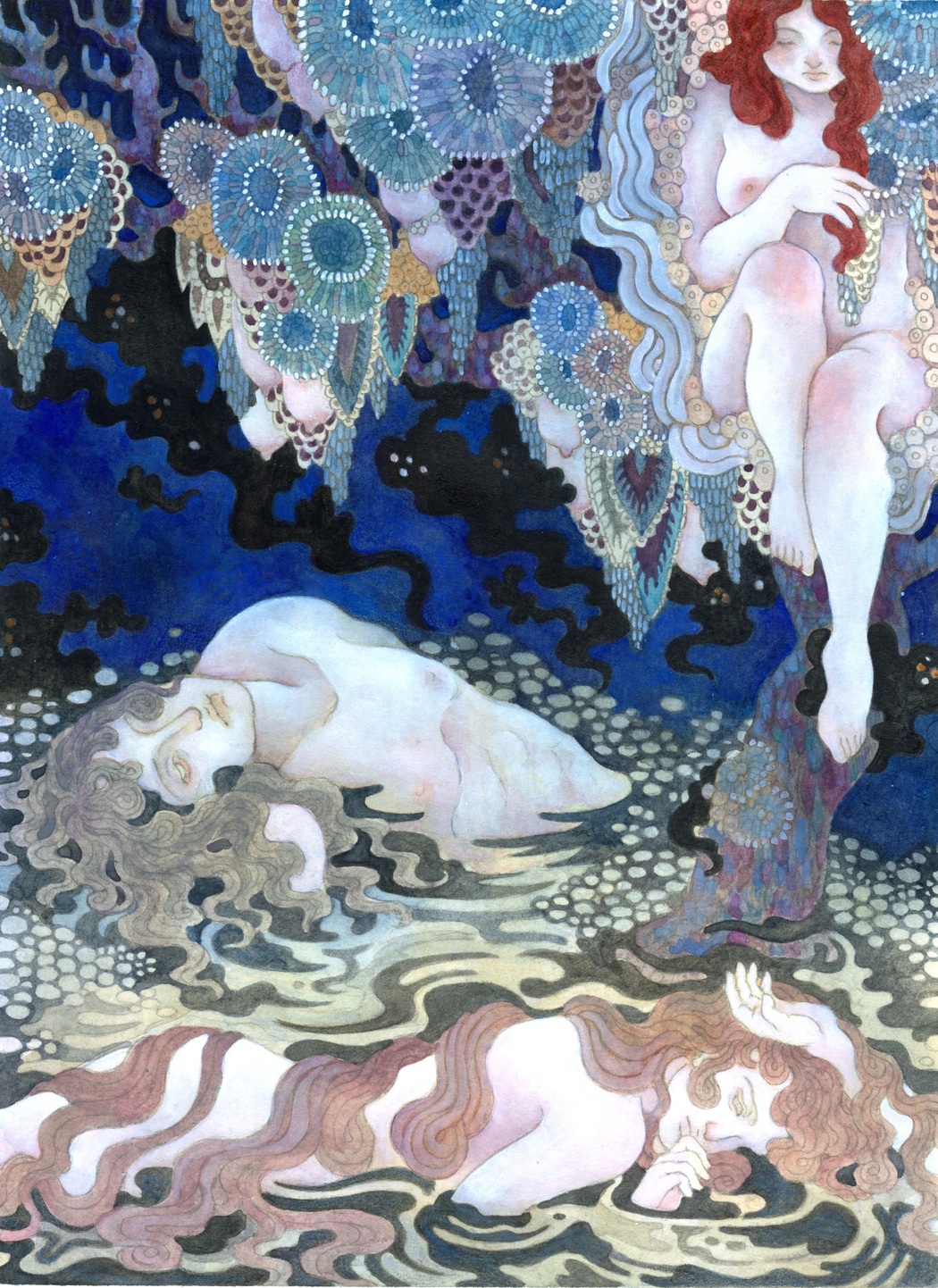 Rainy Tang | The night of desire | 2024
Rainy Tang | The night of desire | 2024
Your style is heavily influenced by Persian miniatures, early Renaissance frescoes, and bio-arts. How do these inspirations shape your artistic voice?
Imagery wise, my art is influenced by these styles primarily in terms of form, color, and composition-for example, the intricate details and vibrant hues of Persian miniatures, the theatrical special arrangements of early Renaissance frescoes, and the organic, scientific aesthetics of bio-art.
However, beneath these visual influences, I’m very drawn to the innocence and honesty of early Renaissance frescoes. They are not technically perfect and mature as in the flowering era of Renaissance, but there is a beauty of its rawness and honesty. There are no great grand compositions and showing-off with skills yet I find them more impressive. For my ‘Letter from an Unknown Woman’ project I went very fancy with visual presentation, but emotionally I also wanted to achieve the same honesty in presenting the woman’s love and sorrow.
As for bio-art, I find them such a miracle to look at as the creation of nature and mother earth. I can sense love, horror, beauty and tendency within the mysterious nature. It has always been a great inspiration for me from a spiritual aspect.
My artistic perspective also remains deeply shaped by my roots, an Eastern sense of subtlety and restraint.I believe while external aesthetics can shift across styles, an artist’s cultural and emotional core fundamentally shapes how a theme is perceived and expressed. This inner perspective dictates narrative tone, artistic choices, and the emotions conveyed to the audience. Such as during my process of visualisation, I have to answer questions to myself like: Do I sympathize with this woman or critique her? Do I depict her story as passionate or restrained, realistic or fantastical? My answers to these questions are very much based on my roots and personality, which I believe are key elements that shape my artistic voice.
Themes of feminism and nature play a key role in your art. How do you use metaphors to explore these subjects?
As a female artist, I feel a sense of female solidarity with the unknown woman, which makes me worry for her, empathize with her, and understand her longing.
As for nature, I have always had this feeling of intimate connection with nature, and I love using elements from nature in my images. I believe nature contains a great power, and people as creatures living within nature are all universally connected to it in an interesting way. Nature is beautiful, mysterious, and fearful sometimes too. My love of nature expanded to the unknown woman within the book, and this love added on to my sympathetic feel toward her.
When exploring the subject, my eastern restrained roots approach translates her love into a more metaphors way (which I think many western artists have a more straight-forward voice when illustrating love). For example, in the first image of the serie, When the girl silently watches the man from behind a curtain, the flowers blooming toward him above her head unfold her emotions they gaze at him with yearning eyes, reaching and kissing him in her place.
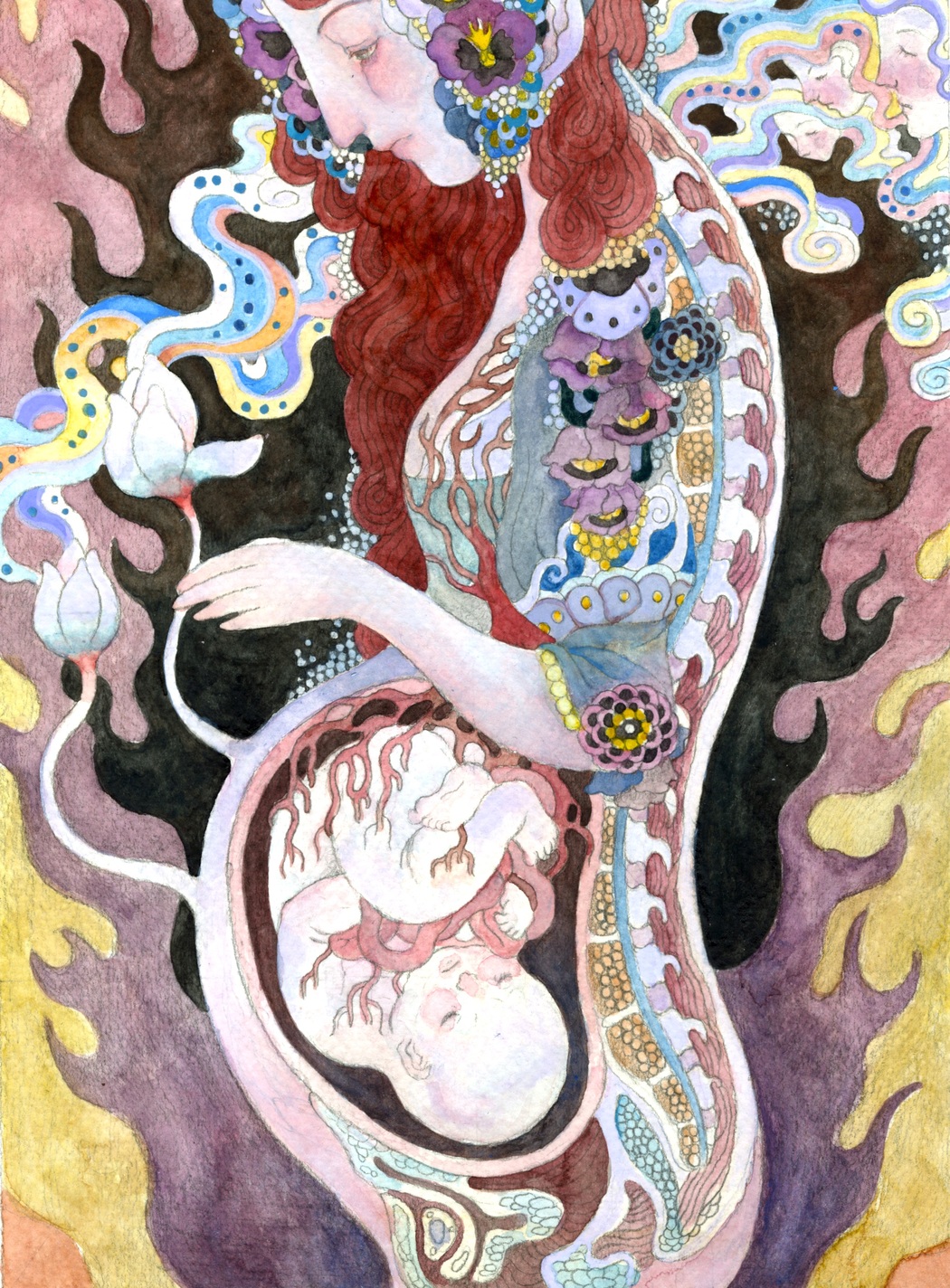 Rainy Tang | The birth | 2024
Rainy Tang | The birth | 2024
Many of your works juxtapose themes like fertility and motherhood with darker elements like death and deformity. What message do you hope viewers take away from this duality?
This is simply my personal mode of expression-conveying hope within darkness while planting unease within beauty. I don’t deliberately design my compositions to communicate a precise message to the audience. Instead, my works reflect internal projections of many childhood experiences within me, as I’m very good at remembering fearful emotions as a kid and their final form emerges organically.
I think nature also plays a role here as the opposing elements I have in my work (fertility, motherhood, love, death, deformity) are all a stage of natural circles, and for achieving unity and harmony you need to have all elements included. Elements from only one side will lose the idea of balance and fail to achieve this complement. When you talk about the beauty of love you can’t avoid talking about the sadness and death since it’s all part of it.
What challenges do you face when depicting tragedies in a “soft, poetic manner”?
The visualization process was challenging since the book is deeply focused on the woman’s psychological state, and a direct, literal adaptation felt dull to me. I wanted my illustrations to express her joy, longing, pain, and struggle. The novel’s emotional depth is so intricate, and I hoped to capture this ebb and flow rather than simply illustrating plot points.
To achieve this, I spent significant time refining my approach, discarding many drafts that felt too narrative-driven and failed to convey the novel’s richness in emotions. I believe, Art, as a different medium from writing, should have its own unique expression rather than just replicating the text. The final work emerged from this realization-I adopted a highly decorative, fantasy-inspired style filled with symbols and metaphors to convey the protagonist’s emotions mixed with my understings to her choice. I wish all the visual symbolic associations on the imagery made it poetic and my sympathetic attitude towards the woman create a sense of softness in my work.
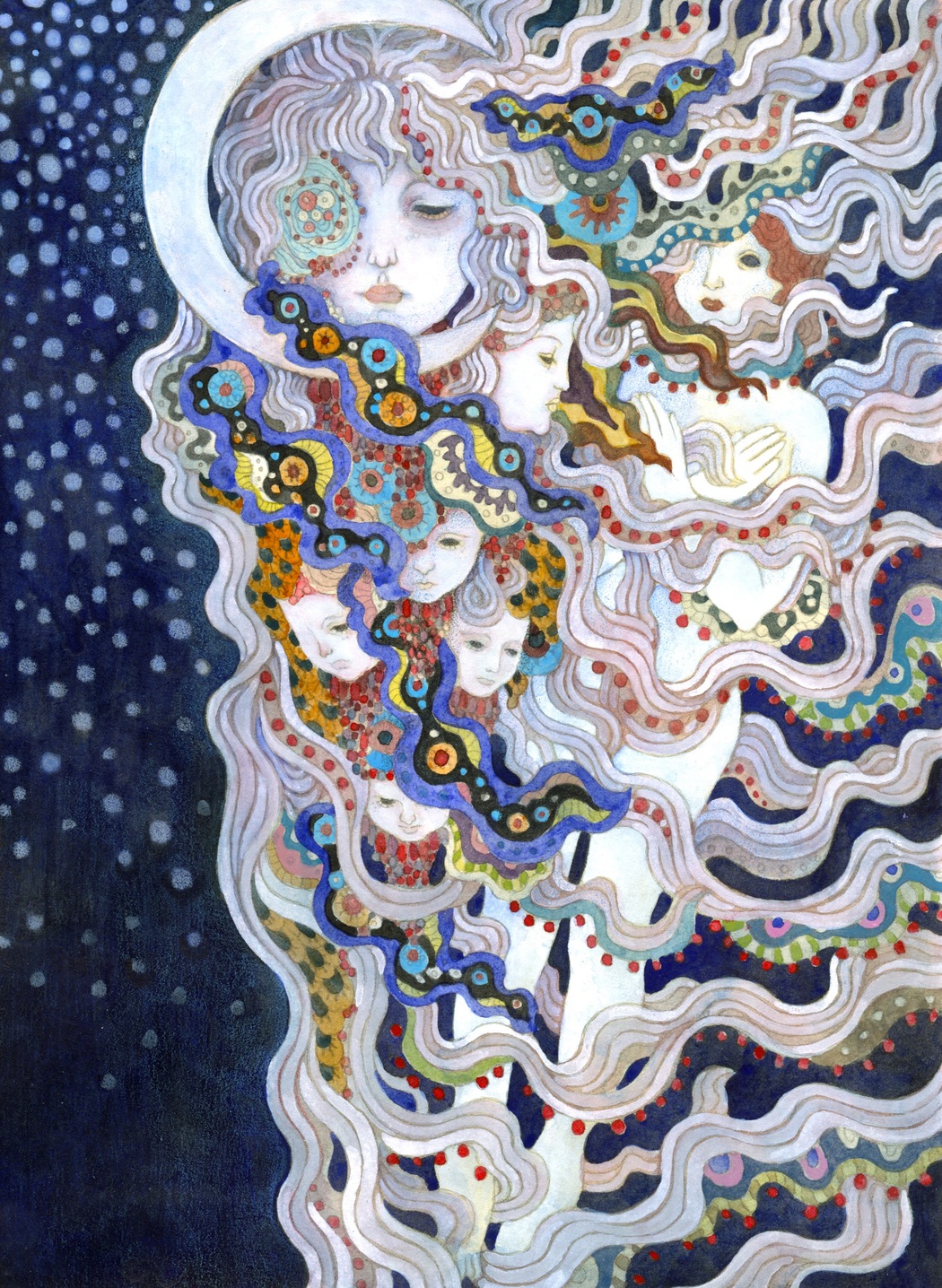 Rainy Tang | The windy night | 2024
Rainy Tang | The windy night | 2024
Your works carry an intricate level of detail. What techniques do you use to achieve this delicacy in watercolor and colored pencil?
I think delicacy is a term I wanted to achieve for this project in order to visualize the beauty and sadness. Watercolor and pencil for me is a perfect medium to capture that kind of sense, as oil will be too heavy for the story to hold. Watercolor as a medium itself has this delicacy within it, and also I’m painting in small scale with all of these details so people will have to look at them closely, which can add another level of intimacy toward it.
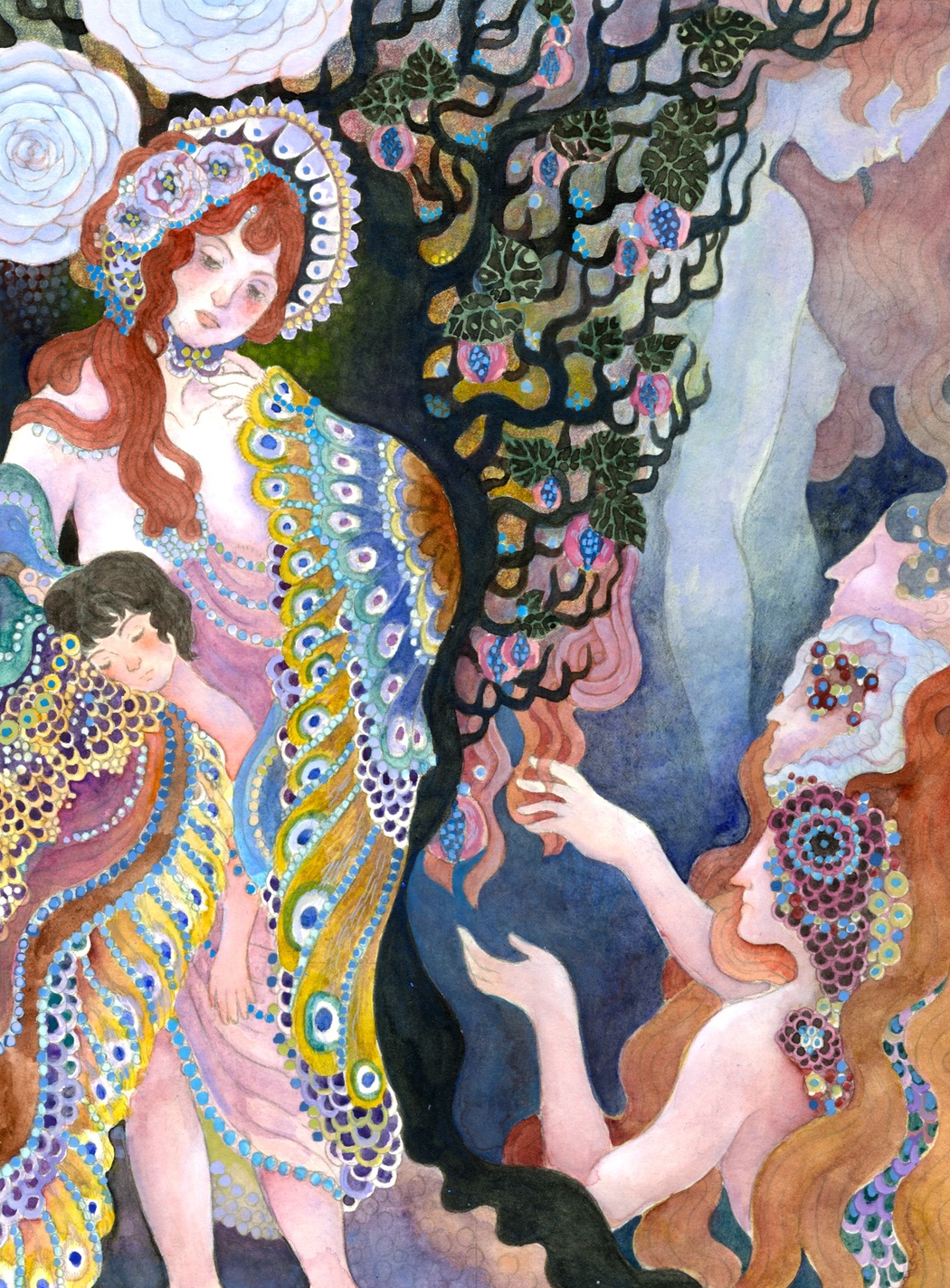 Rainy Tang | Mistress | 2024
Rainy Tang | Mistress | 2024

Leave a Reply